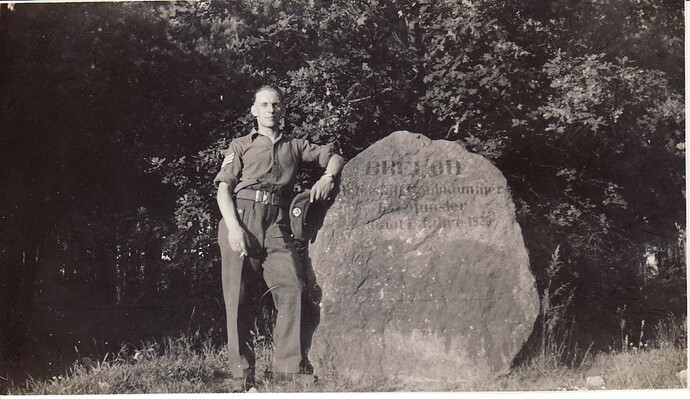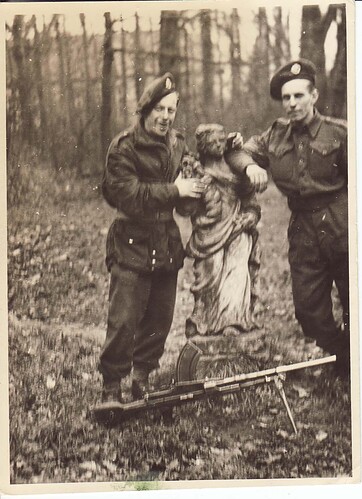I am attempting to attach a photo of Art leaning up against a large rock somewhere in Europe during WWII. I would like ot know the significance of the rock if possible.
I’m also looking for information or to contact anyone who has served with Arthur James Williams, Ptr. inlisted June 3, 1943 and transfered to the DCLI July 15, 1943 unit 64, then transfered to the KOYLI Unit 5 on Nov. 14, 1946. Released from service Oct. 3, 1947.
I am attempting to complete a bibliography of his life and would love to communicate with someone who knew of his activities during the years 1943 and 1947
Regards
Daryl Ashby




